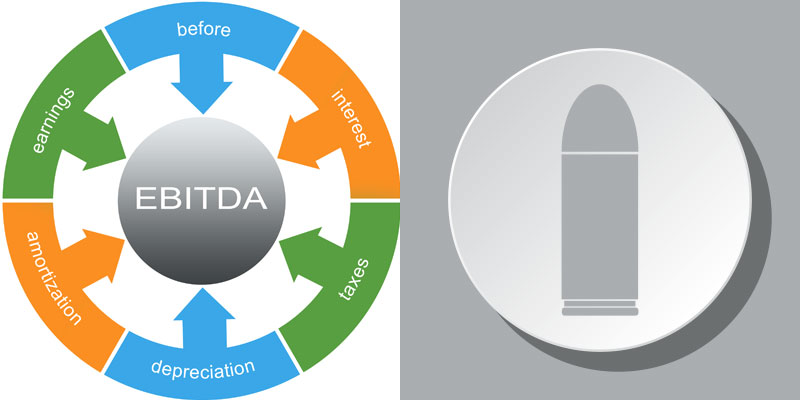A Business Owner’s Surprising Silver Bullet to Greater Success
This blog post originally appeared in WFCA’s Premier Flooring Magazine, as a guest article by QFloors CFO Trent Ogden.
What if I were to tell you that for little to no out of pocket expense, you could increase profits and enjoy greater success as a floor-covering business? It’s a bold claim, but I stand confidently behind it. The secret lies not in hiring the Salesperson of the Year (though that can help) or hitting the jackpot via a spot-on promotion or ad campaign. No, it’s not quite that flashy. In fact, I’m afraid some may even find it boring, and immediately dismiss it. But if you’re serious about steering your flooring business to greater heights, there’s a risk-free, sure-bet way to accomplish it. Something everyone can do, but few actually carry out.
It’s following 5 simple steps.
And it begins with a secret weapon that is definitely underutilized and unappreciated… your business’ financial statement.
-
STEP 1: OBTAIN AN ACCURATE FINANCIAL STATEMENT.
Financial statements are generated by your business software. I can’t sufficiently stress the importance of making sure your financial statements are accurate and up to date. The majority of your business decisions should be based upon information from your statements, and if that information is not correct, you’re flying blind.
Financial statements are not just for filing your tax return, giving to the bank when you need a loan, or sending to manufacturers when they require a health check of your company. Too many business owners in the floor covering industry don’t appreciate the gold mine of information that these statements provide, and how understanding them can guide you to greater success.
Your financial statements will only be as accurate as the data entered, and as the software you are using allows them to be. Floor-covering specific or contracting software are far superior at getting accurate numbers than off-the-shelf accounting programs like QuickBooks. The critical factor is that general accounting software does not use the Matching Principle in recognizing income and direct cost of the job, whereas flooring specific software does. The Matching Principle of accounting says that you recognize your sales income and corresponding cost of sales at the same time. If you’re using flooring specific software, this is accomplished by job costing each job accurately, and then your software automatically posting journal entries at the time of the completion of the job.
Are you recognizing your cost of goods and cost of labor on the same day that you recognize your revenue for that job? If not, your Profit & Loss statements will have skewed results.
Another important question to ask is, "Are you recognizing a sale when you sell it or when you complete it?" The correct answer should be when it is completed. But again, generic accounting software won’t do that.
So first things first, make sure you have a software tool that will give you the best, most accurate information about your business. The next four steps are simple if you have this in place. If you don’t, they aren’t even worth attempting.
Once you know you can rely on your numbers, here’s the next step.
-
STEP 2: LOOK AT KEY RATIOS.
There are many key ratios and I can’t review an exhaustive list here but a critical one is EBITDA (which stands for earnings before interest, taxes, depreciation, and amortization.) Most dealers will look at the net profit from their Profit & Loss statement, but EBITDA gives you a truer picture of how well you are operating your business. You can find EBITDA by removing those expense accounts stated above from the P&L statement.
Another important ratio in understanding your overall profitability is ROI, or Return on Investment. This key bit of information is found by taking your net profit and dividing it by your equity. ROI measures a percentage of how much profit you have made compared to how much you have invested.
Once you have these important ratios, you come to an important exercise every successful dealer must do:
-
STEP 3: COMPARE, COMPARE, COMPARE.
Sure, we shouldn’t compare ourselves to another person when it comes to our house or our weight or our kids’ intelligence. But comparing your business can provide an illuminating perspective.
First, compare your key ratios year over year. Go back as far as 3-5 years. Put these numbers side by side so you can recognize trends, if they exist. Evaluate if your ROI and EBITDA percentages are getting bigger or smaller in general. What happened in your business to affect those changes? Weigh in factors like personnel changes, location changes, higher or lower profit margins, incorporating software, etc. Think about what happened and why.
Next, compare your business with other businesses. This can be incredibly helpful. Compare your numbers with the industry average. Industry averages are easily accessible through many sources, and cost very little money to procure. Reports are generally under $100 and well worth the expenditure. There are many different sources. One that we personally have used is Biz Miner. They collect all of the corporate tax returns, and segregate them by industry. Then they subdivide those into size of business. So you can compare yourself against industry averages for similar sized operations.
-
STEP 4: INVESTIGATE THE WHY’S.
Are you better or worse than the industry average? Look deeper to try to figure out the why’s behind the differences. Make assumptions.
For example, something that can cause big swings in these ratios is gross profit margin. Compare yours with the other companies’. If they are lower, why? Should you raise prices? Sometimes making very small changes can significantly impact gross profits.
In addition, compare yourself against industry averages in other areas like general and administrative expenses, rent, or payroll. Again, think about the why’s behind the differences.
Once you’ve compared yourself with similar sized businesses, next take a look at the ratios and averages of larger operations than yours. This can yield some surprising information and cause for reflection. Evaluate whether aligning your percentages closer to theirs could bring similar growth.
-
STEP 5: IMPLEMENT THE CHANGES.
A small rudder turns a large ship. Sometimes even really small changes, like increasing labor charges or incorporating software, can make a huge difference in your overall success and profitability as a company.
Case in Point: Last fall we had a conference attended by flooring companies who use QFloors software to run their businesses. During the conference we talked about these simple but important steps. In preparation for it, I compared our QFloors users against the industry averages, and what I found happily surprised even me.
Our customers on average were twice as profitable as similar sized businesses in the industry.
Income and Expense - Profit and Loss%
| Goods/Labor | 2011 | 2012 | 2013 | My Store |
|---|---|---|---|---|
| Industry Averages | ||||
| Business Revenue | 100.00% | 100.00% | 100.00% | 100.00% |
| Cost of Sales | 58.08% | 59.76% | 61.28% | 64.37% |
| Gross Margin | 41.92% | 40.24% | 38.72% | 35.63% |
| Officers Comp. | 2.47% | 1.53% | 1.65% | 0.83% |
| Salary-Wages | 9.78% | 8.54% | 9.35% | 12.69% |
| Rent | 6.41% | 6.15% | 6.07% | 3.63% |
| Taxes Paid | 1.43% | 2.13% | 2% | 1.55% |
| Advertising | 4.28% | 4.34% | 4.54% | 2.68% |
| Benefits-Pensions | 0.81% | 0.85% | 0.98% | 0.86% |
| Repairs | 1.26% | 0.61% | 1.15% | 0.59% |
| Bad Debt | 0.23% | 0.17% | 0.15% | 0.34% |
| Sales, General, Admin & Misc | 11.06% | 11.91% | 11.49% | 6.84% |
| EBITDA | 4.19% | 4.01% | 1.34% | 5.63% |
| Amort-Deprec-Depl | 0.74% | 0.67% | 1% | 0.81% |
| Operating Expenses | 38.47% | 36.90% | 38.38% | 30.82% |
| Operating Income | 3.45% | 3.34% | 0.34% | 4.81% |
| Interest Income | 0.10% | 0.41% | 0.17% | 0.01% |
| Interest Expense | 0.62% | 0.89% | 0.65% | 0.28% |
| Other Income | 1.39% | 1.36% | 1.32% | -0.03% |
| Pre-Tax Net Profit | 4.32% | 4.22% | 1.18% | 4.51% |
| Income Tax | 1.47% | 1.43% | 0.36% | 0.05% |
| After Tax Net Profit | 2.85% | 2.79% | 0.82% | 4.46% |
| Discretionary Owner Earnings | 6.06% | 4.99% | 3.47% | 6.11% |
*It should be noted that according to the data, a large percentage of the average small and medium sized dealers in the flooring industry use QuickBooks.
Regardless of the software you use (again, as long as you can easily obtain accurate and current numbers), these five simple steps can be the treasure map to striking gold as a company. I’d bank good money on it.

